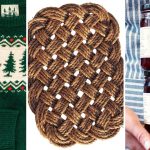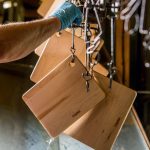How Vermont Fiber Artist Hannah Regier Finds Inspiration in Nature
Fiber artist Hannah Regier dyes, weaves, and knits using nature’s colors.
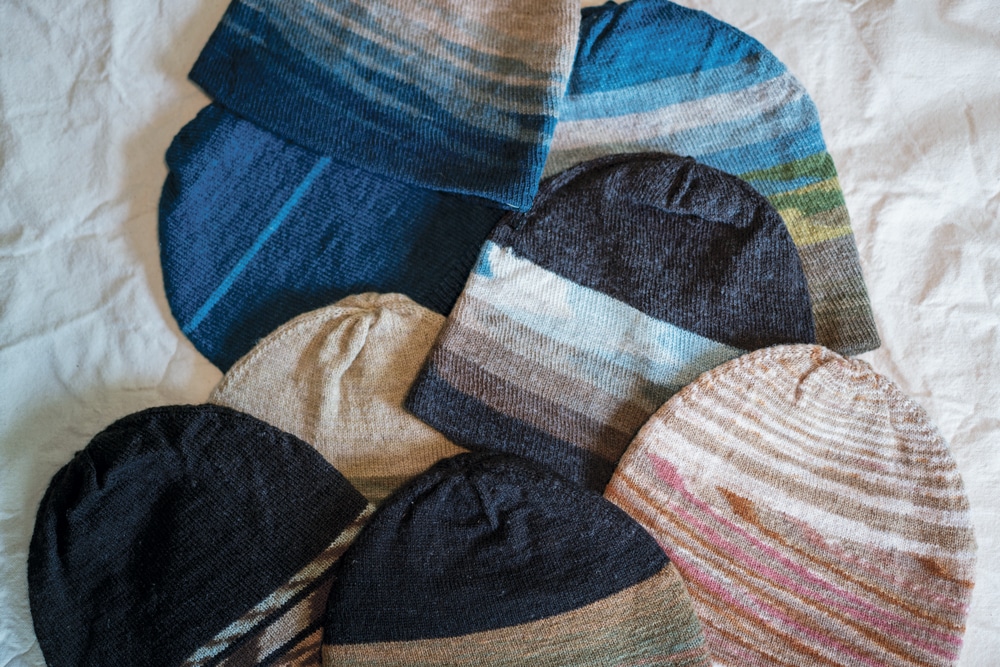
Coffee By Design | Portland, Maine
Photo Credit : Katherine KeenanA patch of indigo grows alongside Bull Creek, giving no hint of the infinite range of blues hidden in its leaves. Tucked down a short hillside, and invisible from the road, the plants are watched over by Hannah Regier’s small stone studio, from a deck off the back, while its front faces a well-packed Vermont dirt road in the town of Athens, population 440, give or take.
Directly across the slender byway sits a little brick home, built in 1820 as a schoolhouse, just marginally bigger than the studio, with an outhouse turned woodshed a few feet away. There’s something about the light, the plants, the surrounding fields, the cozy buildings, the scale of this “micro-homestead,” as Regier calls it, bridging both sides of the road, that makes her world of fiber art—gathered under the name Sky Like Snow—seem like someplace Bilbo Baggins could call home. Or the hidden domain of a medieval herbalist.
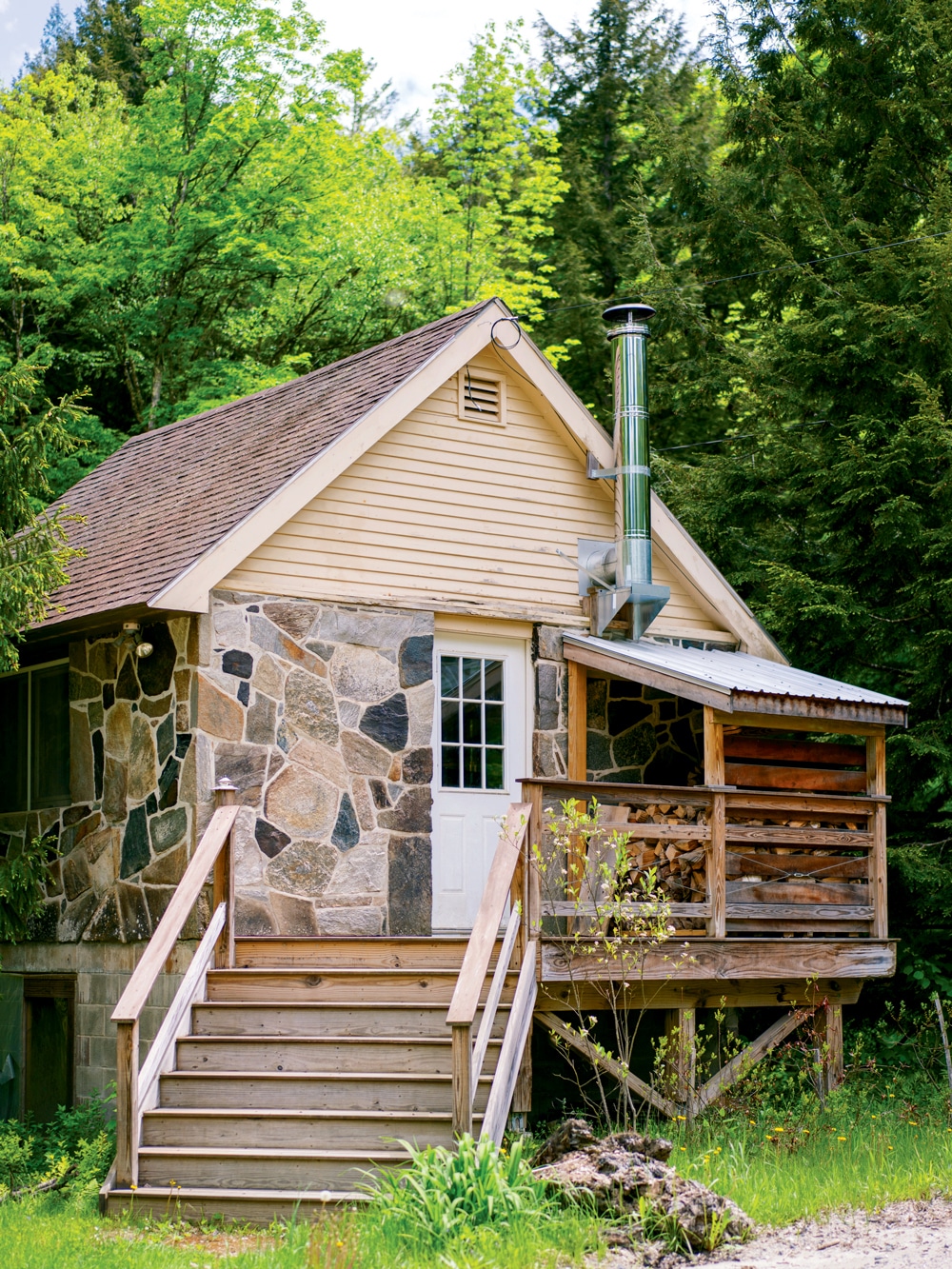
Photo Credit : Vanessa Leroy
Here, working between the two buildings, Regier weaves and knits, seemingly out of the elements, shawls and hats and scarves that are suffused with the colors she gathers from the land around her. Colors drawn from plants she grows down by the creek, or in her backyard, or that she has foraged, gently, from the woods that climb behind the fields. Japanese indigo, wild madder, dyer’s chamomile, buckthorn, rhubarb, goldenrod. Mushrooms that turn to teal, roots that go red, bark that stains orange, and leaves that go all shades of blue—the essence of nature, yielding colors as harmonious as nature itself.
Dyeing can be as simple as boiling mushrooms in a stainless-steel dye pot on the stove in her kitchen, straining out the mushrooms, and then stirring in skeins of yarn; or as complex as the multistep process of extracting and fermenting indigo over the course of days before the dye bath is ready. And the textures, soft and springy. “It’s the nature of the type of yarn I use—squishy and fine, from wool and alpaca that I buy from local farmers and have spun at a little fiber mill in New Hampshire,” Regier says.
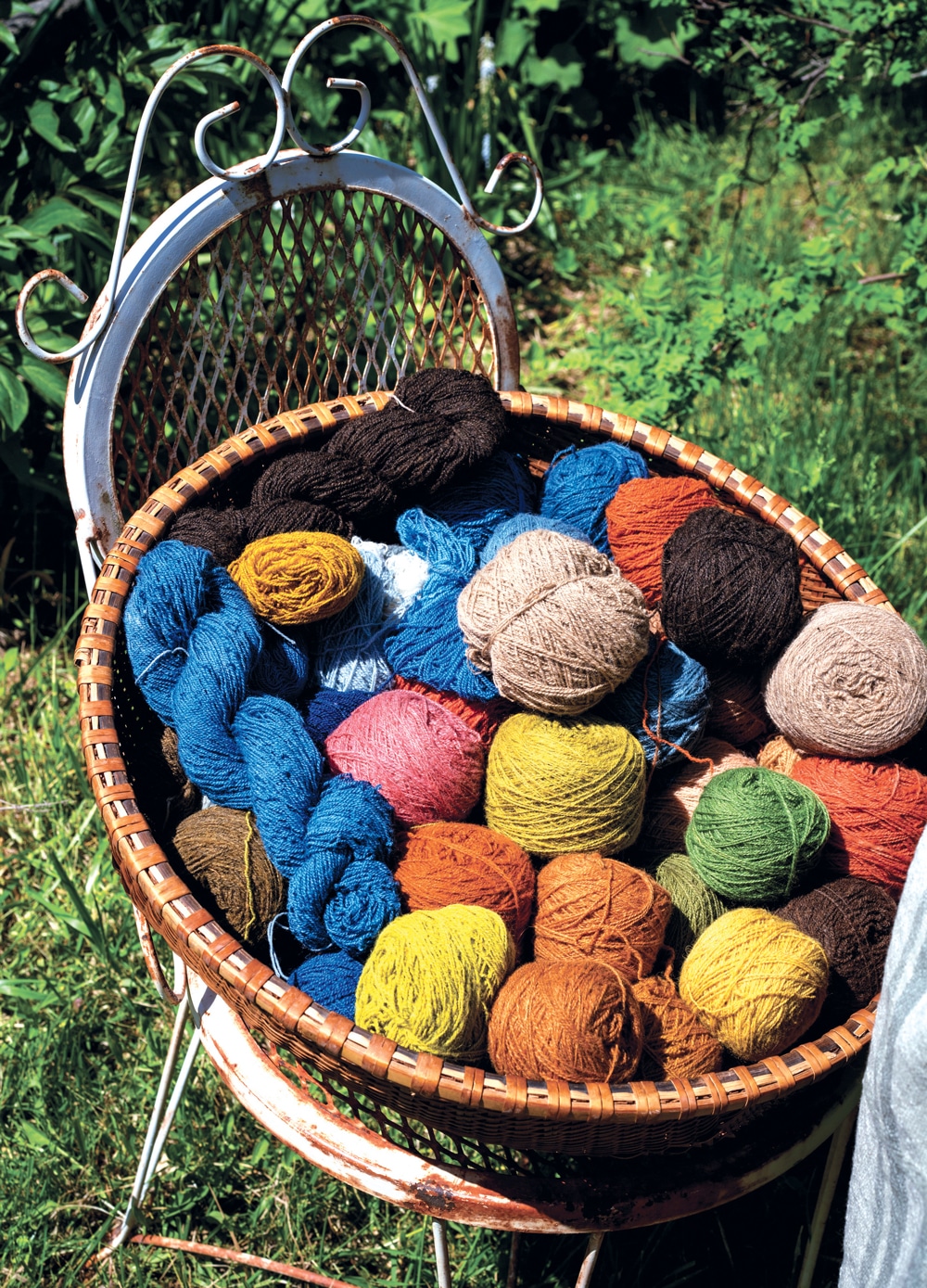
Photo Credit : Vanessa Leroy
She’s been knitting since she was 8. Her mother has been a fiber artist, a weaver, since before Regier was born. “I was just fascinated with the idea that you could make your own clothing and cloth,” she remembers. “That’s still a driving force. It’s so amazing that you can take these materials and make something solid.” And yes, she wears her own hats. Even indoors, and to bed.
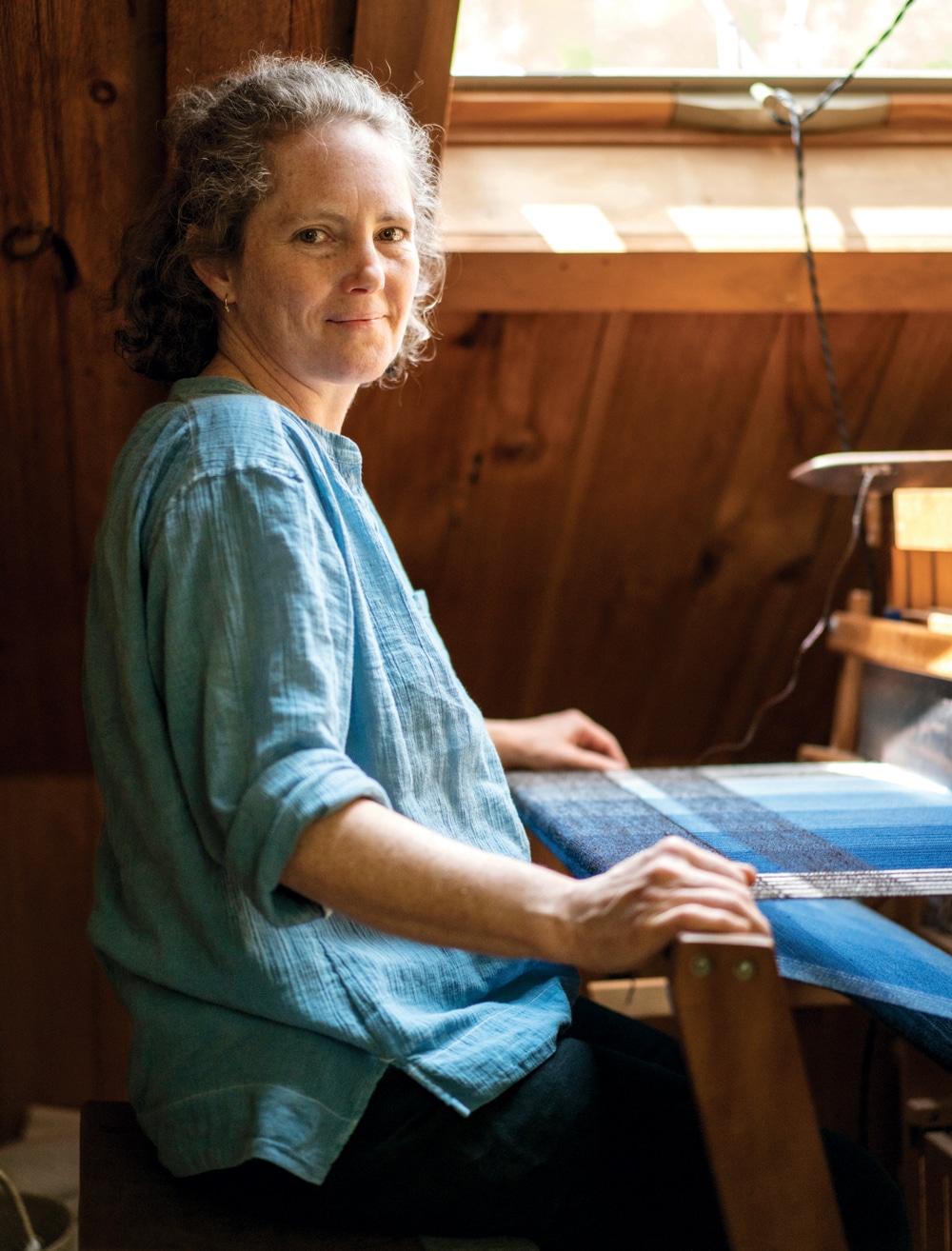
Photo Credit : Vanessa Leroy
Right now, on a traditional 32-inch-wide loom that occupies most of the second-story loft of her brick house, she’s strung an entire spectrum of indigo-dyed threads that she’ll weave into large square bandannas that can be “draped over a chair, wrapped around your neck, wrapped around your head or waist.” Across the street, in her stone studio, it’s a trip back to the ’60s, with a knitting machine “from the avocado-green era,” a treasure dug from her parents’ barn. Little teeth move the thread in a chattering, hypnotic stream, knitting a pattern that Regier has first painted with dye on the wool/alpaca yarn. The resulting landscapes trail across finely wrought, small-stitch watch caps and slouch hats so soft it feels like you’re stroking a cloud.

Photo Credit : Vanessa Leroy
The colors in the bandannas ebb and flow like breath. And when she spells out the provenance of all the colors in a single bandanna, it sounds like something Shakespearean, minus the eye of newt. “This purple comes from a lichen,” she says, pointing. “And this pink, that’s a mushroom. This is dyer’s coreopsis, and here is weld, overdyed with a tiny bit of indigo.” She says she doesn’t choose the color palette: “It’s really what the natural dyes give me. So some of it is on the earthy side, but there are also wild pops of color from purples and indigo.”
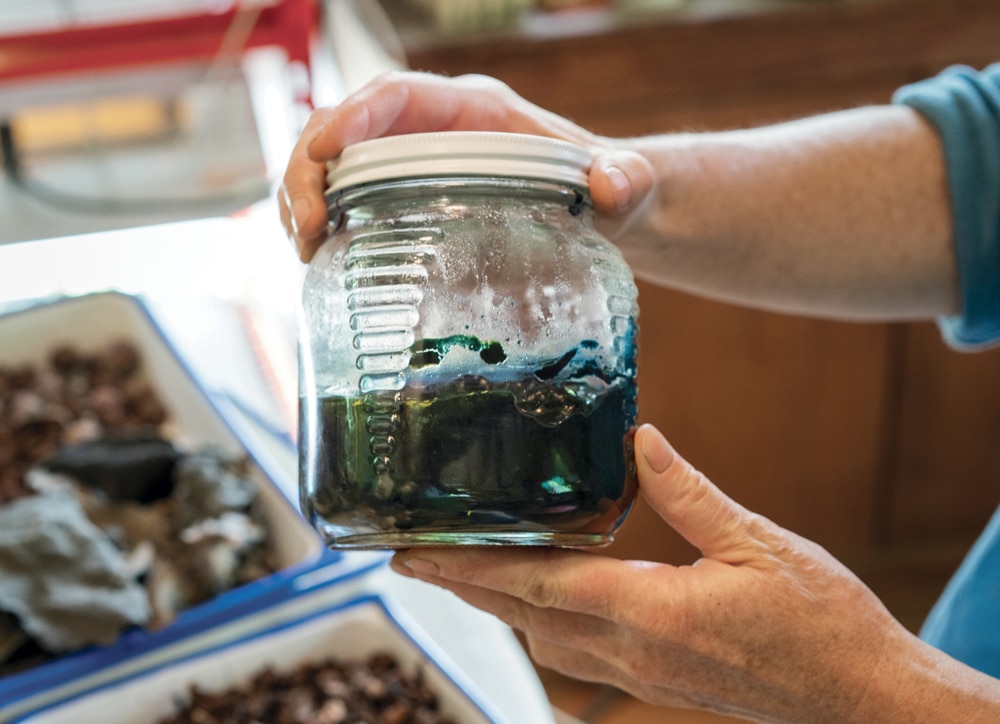
Photo Credit : Vanessa Leroy
She talks about terroir, that ineffably delicate interplay of land, water, and air that affects everything growing. We taste its effects in wine. But equally we see its effects on plants, mushrooms, and their dyes, varying from year to year. “I recently did a project where I collected Hydnellum mushrooms from 30 different patches that I’ve been visiting over the years,” she says. “It literally produced 30 different colors of teal.”
So when you look at one of Regier’s hats, or a scarf or wrap, you’re actually catching a glimpse of the landscape all around here, in Athens, Vermont. In any given year, it will be different. And it’s a peek at the secrets hiding in the indigo plant or that sliver of mushroom.
“It was kind of a light bulb going off when I connected the natural dying to being on the land, knowing the land,” she says. “Then realizing everything around me was a dye.” And there’s no predicting how this confluence of elements and materials will turn out—like this lovely woven wool and alpaca scarf drenched with memories of vibrant buckthorn bark. skylikesnow.com






